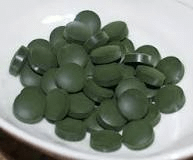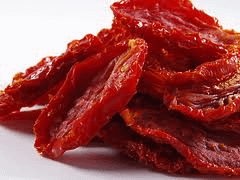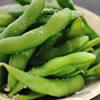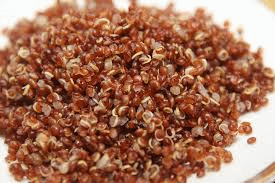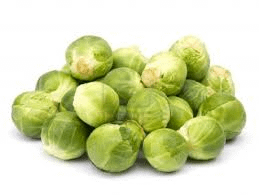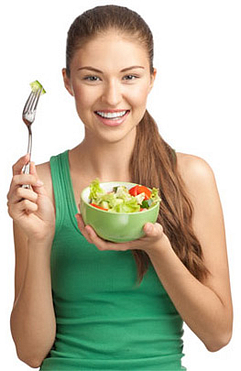From body builders, to pregnant moms to growing teens, protein is a vital ingredient for a healthy body. But what is it and where do we get it?
What is Protein?
Protein is a nutrient made of amino acids that is necessary for the body’s proper growth and function.
Nutritionally, protein assists in the building and repairing of muscles and bones.
It is the building block of life and the body needs it to repair and maintain itself.
While the body can manufacture several amino acids required for protein production, a set of essential amino acids needs to be obtained from our food (e.g. from animal or plant protein sources).
For the average adult, getting enough protein is important.
- Adult women (Aged 19-70+ years), 46 grams of protein are recommended a day.
- Adult men (Aged 19-70+ years); 56 grams per day are recommended. [1]
For young people, The Centers for Disease Control and Prevention, give the following daily guidelines:
• Children ages one to three should have at least 13 grams protein.
• Children ages four to eight should have at least 19 grams protein.
• Children ages 9 to 13 should have at least 34 grams protein.
• Girls ages 14 to 18 should have at least 46 grams protein.
• Boys ages to 14 to 18 should have at least 52 grams protein.
[Source]
What are High Protein Foods?

A personal choice exists when it comes to whether you get your protein from animal or plant sources (or both). Nonetheless, here is a list of some of the Highest Protein Foods.
As Usual, If You Don’t Want To Panic, Go Organic!
.
Top 10 High Protein Foods by
Nutrient Density (Protein per Gram):
|
#1: Spirulina |
58g per 100 grams |
4g per tablespoon (7 grams) |
1g protein per 5 calories |
|
|
#2: Parmesan Cheese |
42g per 100 grams |
2g per tablespoon (5 grams) |
1g protein per 11 calories |
|
|
#3: Soy Beans |
40g per 100 grams |
68g per cup (172 grams) |
1g protein per 11.3 calories |
Click to see complete nutrition facts for Dry Roasted Soybeans |
|
#4: Lean Beef |
37g per 100 grams |
31g per 3 ounce serving (85 grams) |
1g protein per 5.5 calories |
|
|
#5: Lamb (Shoulder) |
36g per 100 grams |
20g per chop (55 grams) |
1g protein per 7.9 calories |
|
|
#6: Chicken and Turkey Breast |
33g per 100 grams |
58g in a chicken breast (172 grams) |
1g protein per 5.6 calories |
|
|
#7: Squash and Pumpkin Seeds |
33g per 100 grams |
9g per ounce (28 grams) |
1g protein per 15.8 calories |
Click to see complete nutrition facts for Squash and Pumpkin Seeds |
|
#8: Non-fat Mozzarella |
32g per 100 grams |
36g per cup shredded (113 grams) |
1g protein per 4.7 calories |
Click to see complete nutrition facts for Non-fat Mozzarella |
|
#9: Fish (Tuna) |
30g per 100 grams |
26g per 3 ounce serving (85 grams) |
1g protein per 4.6 calories |
|
|
#10: Pork Loin (Chops) |
30g per 100 grams |
23g per chop (78 grams, ~3oz) |
1g protein per 9.2 calories |
[Source]
What Are The Best Vegetarian Protein Sources?
Although your daughter shuns meat, she can still get all the protein she needs from dairy foods, grain products and vegetables.
1. Spirulina and Chlorella – Natural health researchers often consider the green algae to be the ultimate “superfood” and for good reason: Aside from containing unsurpassed levels of chlorophyll and iron, spirulina and chlorella also contain 12 times more digestible protein than beef. Indeed, Spirulina and Chlorella are comprised of between 45-75 percent pure plant protein by mass. Spirulina and chlorella tablets and powders remain the protein source of choice for vegetarian and vegan body-builders seeking to improve muscle mass. You can get them here.
2. Sun-dried tomatoes – Second to spirulina and chlorella in the protein department are sun-dried tomatoes, which are tomatoes that have undergone an intensive moisture-removal process. Sun-dried tomatoes are extraordinarily rich in potassium, dietary fiber, vitamin K and a host of other nutrients. What really makes them stand out, however, is their whopping 11-16 percent protein content by mass – making them a highly protein-rich fruit.
3. Beans – All beans are high in protein, though some are higher than others. Studies have shown that soybeans contain the largest amounts of protein. NB. Stick to unprocessed organic non gmo soy (40 grams protein per 100 grams), Winged beans, Lima, kidney, pinto, white and garbanzo beans are also good sources.
4. Buckwheat – Buckwheat is a gluten-free seed with a low glycemic index and more
You can purchase Buckwheat by the bag here.
Superfoods also have organic buckwheat here.
5. Quinoa – Like buckwheat, quinoa is a gluten-free, low GI seed that contains almost as much protein as the best beans and legumes (often as high as 14 percent). It is also a good source of dietary fiber, phosphorous, iron and magnesium and makes a great substitute to rice or couscous. Red organic quinoa can be found here or at Wellness Warehouse.
6. Spinach – While spinach is famously high in iron, it also contains generous quantities of protein – sometimes up to 13 percent, although this figure varies wildly based on leaf quality. Spinach is extremely versatile (it can be added to pasta, salads, soups, casseroles and even pizzas), so there are many ways to disguise its unattractive taste.
7. Peas – Peas contains eight percent protein, making them one of the best common vegetable sources after spinach. Peas are also a good source of vitamin A and iron and are easy to incorporate into many meals.
8. Corn – Corn on the cob is high in protein and calories, making it a good food to eat before exercising, provided you buy organic corn, especially in the United States.
9. Brussels sprouts – Sprouts are rich in protein and vitamin C and are a good weight loss food due to their low calorie and fat levels.
[Source]
Vegetarian and Pescatarian Protein Rich Foods
|
21g per 100 gram serving (575 calories) |
30g per cup (143 grams) (822 calories) |
6g per ounce (28 grams) (161 calories) |
||
|
Pistachios (Dry Roasted) |
21g per 100 gram serving (571 calories) |
26g per cup (123 grams) (702 calories) |
6g per ounce (28 grams) (160 calories) |
|
|
Peanuts |
24g per 100 gram serving (585 calories) |
35g per cup (146 grams) (854 calories) |
7g per ounce (28 grams) (164 calories) |
|
|
14g per 100 gram serving (673 calories) |
19g per cup (135 grams) (909 calories) |
4g per ounce (28 grams) (188 calories) |
||
|
Pecans |
9g per 100 gram serving (691 calories) |
9g per cup (99 grams) (684 calories) |
2.6g per ounce (28 grams) (193 calories) |
|
|
Sunflower Seeds |
21g per 100 gram serving (584 calories) |
30g per cup (140 grams) (818 calories) |
6g per ounce (28 grams) (164 calories) |
|
|
20g per 100 gram serving (229 calories) |
17g per cup (86 grams) (197 calories) |
1g per tablespoon (5 grams) (11 calories) |
Click to see complete nutrition facts for Unsweetened Cocoa Powder |
|
|
Flax Seeds |
18g per 100 gram serving (534 calories) |
31g per cup (168 grams) (897 calories) |
2g per tablespoon (10 grams) (53 calories) |
|
|
Sesame Seeds |
18g per 100 gram serving (573 calories) |
26g per cup (144 grams) (825 calories) |
1.6g per tablespoon (9 grams) (52 calories) |
Click to see complete nutrition facts for Whole Dried Sesame Seeds |
|
Tempeh (Cooked) |
18g per 100 gram serving (196 calories) |
15g per 3 ounce serving (84 grams) (165 calories) |
5g per ounce (28 grams) (55 calories) |
|
|
Lentils |
9g per 100 gram serving (114 calories) |
18g per cup cooked (198 grams) (226 calories) |
||
|
Lobster |
26g per 100 gram serving (143 calories) |
43g per lobster (163 grams) (233 calories) |
22g per 3 ounce serving (85 grams) (122 calories) |
|
|
Crab |
19g per 100 gram serving (97 calories) |
26g per King Crab leg (134 grams) (130 calories) |
16g per 3 ounce serving (85 grams) (82 calories) |
|
|
Octopus |
30g per 100 gram serving (164 calories) |
25g per 3oz serving (85 grams) (139 calories) |
8g per ounce (28 grams) (46 calories) |
|
|
Abalone |
20g per 100 gram serving (189 calories) |
17g per 3 ounce serving (85 grams) (161 calories) |
6g per ounce (28 grams) (54 calories) |
|
|
Whey Powder |
13g per 100 gram serving (353 calories) |
19g per cup (145 grams) (512 calories) |
1g per tablespoon (8 grams) (28 calories) |
|
[Source]
The Key Is A Balanced Eating Plan
As with anything, the key is balance and protein intake is no different. [2]
Let your body guide you and keep in mind the daily Recommendations to consume in moderation, even something as beneficial as protein.
[1] Source: The Institute of Medicine of the National Academies (IOM)
You might be interested in:
In the US, 80% of girls have been on a diet by t...
[Guest Post by Shannon from Skin-Health-Body] &...
People question all the time whether beauty sleep ...



